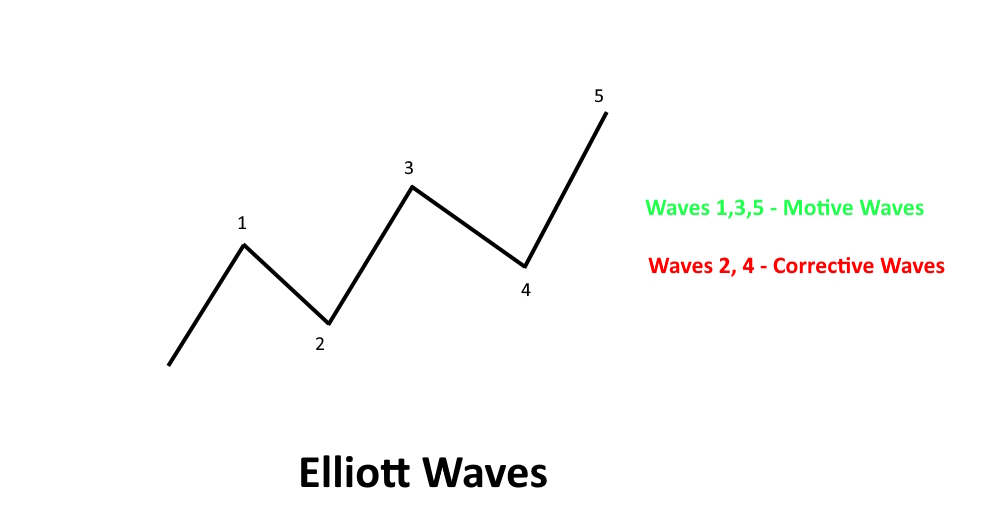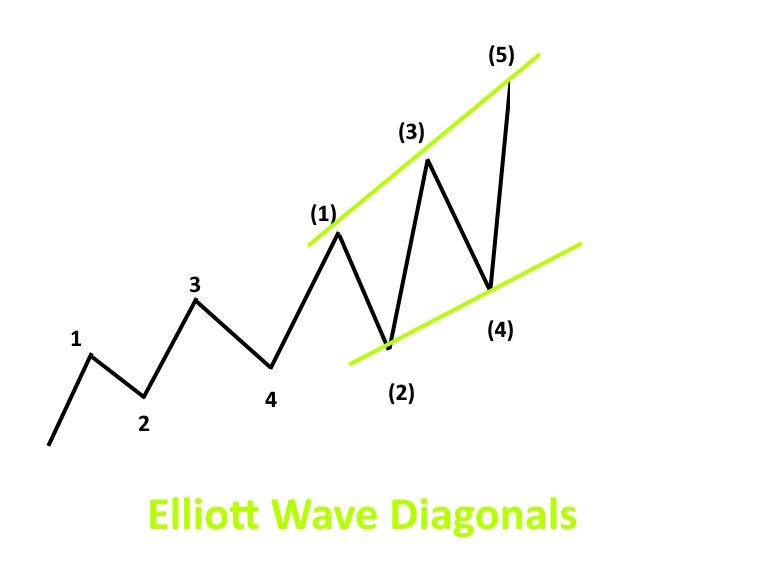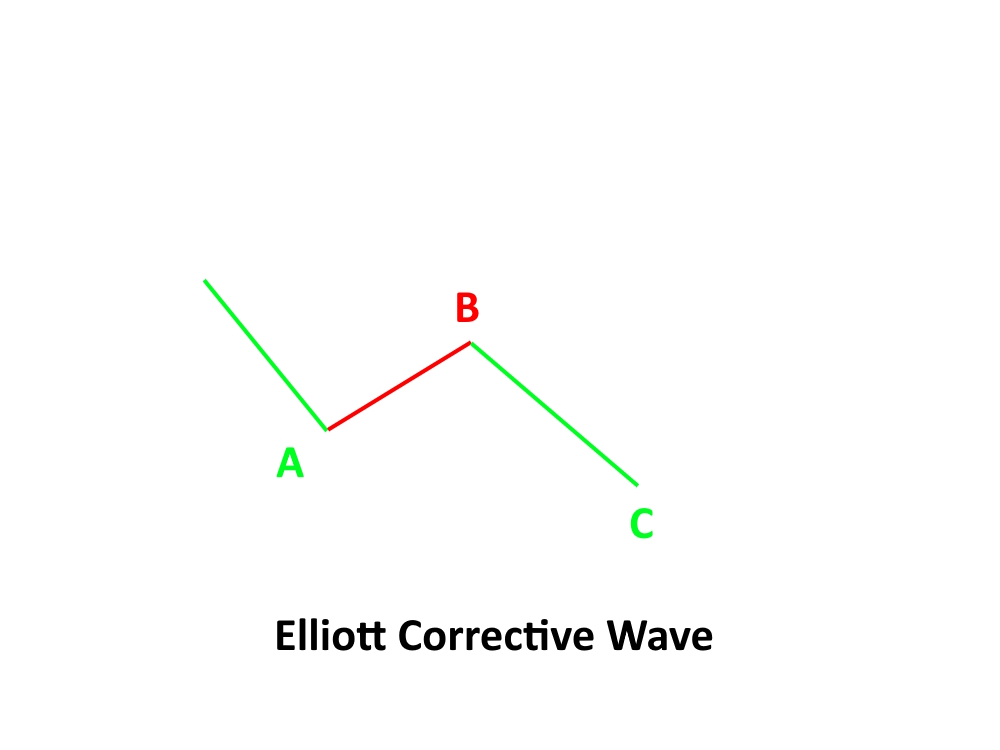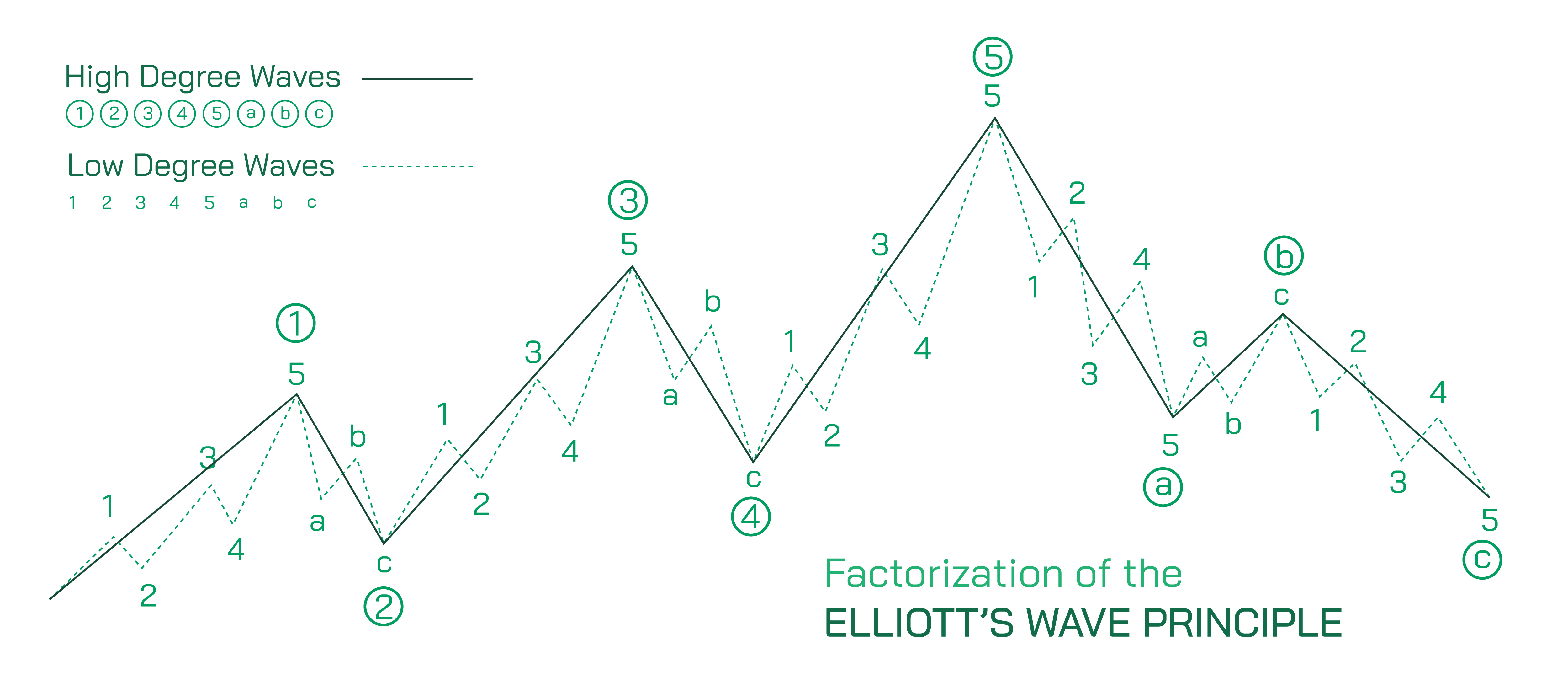Teoria delle onde di Elliott

Indice dei contenuti
CHE COS'È LA TEORIA DELLE ONDE DI ELLIOTT?
PUNTI DI FORZA
CHE COS'È IL PRINCIPIO DELL'ONDA DI ELLIOTT?
QUAL È LA STORIA DI FONDO DELLA TEORIA DELLE ONDE DI ELLIOTT?
SEQUENZA DI BASE
COME APPLICARE IL PRINCIPIO DELL'ONDA DI ELLIOTT?
COME UTILIZZARE LA TEORIA DELLE ONDE DI ELLIOTT NELL'ANALISI TECNICA
QUAL È IL VANTAGGIO DELLA TEORIA DELLE ONDE DI ELLIOTT?
QUALI SONO I LIMITI DELLA TEORIA DELLE ONDE DI ELLIOTT?
LINEA DI FONDO
DOMANDE FREQUENTI
La teoria delle onde di Elliott è un metodo utilizzato nell'analisi tecnica per analizzare i movimenti dei prezzi degli attivi nei mercati finanziari. Creata negli anni '30 da Ralph Nelson Elliott, questa teoria suggerisce che i dati di mercato seguono modelli riconoscibili, denominati "onde di Elliott", influenzati dalla psicologia dei trader.
Questa guida esamina in dettaglio la Teoria delle Onde di Elliott, coprendone i principi fondamentali, le applicazioni, i vantaggi e gli svantaggi. Imparare a conoscere il funzionamento di questo solido metodo aiuterà i principianti e i professionisti della finanza a prevedere i modelli di mercato e a individuare i potenziali punti di svolta con maggiore efficienza. Continuate a leggere per scoprire ulteriori informazioni.
CHE COS'È LA TEORIA DELLE ONDE DI ELLIOTT?
La teoria delle onde di Elliott è uno strumento di analisi tecnica. Suggerisce che i prezzi delle attività tendono a seguire un modello che assomiglia a un'onda, salendo e scendendo in modo prevedibile. Secondo questa teoria, questi movimenti sono guidati dal sentimento di trader e investitori, che esitano tra ottimismo e pessimismo.
Il modello Elliott Wave suddivide queste onde in sequenze più piccole. In genere, ci sono cinque onde "up", in cui i prezzi aumentano perché i partecipanti al mercato si sentono positivi, seguite da tre onde "down", in cui i prezzi scendono a causa del sentimento negativo.
I trader utilizzano spesso questo approccio per prevedere le tendenze future dei prezzi in diversi mercati del mondo reale, come azioni, materie prime e forex.
PUNTI DI FORZA
- La teoria delle onde di Elliott analizza i movimenti dei prezzi sulla base di modelli d'onda riconoscibili guidati dalla psicologia di massa del mercato.
- È comunemente rappresentata da una struttura a cinque onde che si muove nella direzione della tendenza principale, seguita da tre onde correttive.
- La teoria delle onde di Elliott è stata sviluppata da Ralph Nelson Elliott negli anni Trenta.
- I modelli d'onda e i rapporti di Fibonacci aiutano a prevedere le svolte del mercato e a fissare gli obiettivi di prezzo.
- Integra l'analisi tecnica con la psicologia per valutare le variazioni del sentimento di mercato.
- Il conteggio delle onde è soggettivo e richiede abilità per applicare la teoria con precisione.
CHE COS'È IL PRINCIPIO DELL'ONDA DI ELLIOTT?
Il principio alla base della teoria delle onde di Elliott rivela i modelli psicologici alla base dei movimenti di mercato. Essa suggerisce che la psicologia degli investitori oscilla naturalmente tra pessimismo e ottimismo, formando così modelli prevedibili nei prezzi di mercato.
Questo principio è particolarmente evidente nei mercati finanziari, dove i cambiamenti nell'atteggiamento degli investitori si traducono in variazioni dei prezzi delle azioni. L'analisi di questi modelli ricorrenti consente agli analisti di identificare la fase attuale del mercato e di prevedere la sua probabile traiettoria futura.
Fondamentalmente, la teoria delle onde di Elliott suggerisce che i mercati rispondono in modo incoerente agli eventi esterni. Ad esempio, una notizia che oggi può far salire i prezzi potrebbe avere l'effetto opposto domani. Questa incoerenza indica che i movimenti del mercato sono influenzati principalmente dall'umore collettivo degli investitori piuttosto che da fattori esterni.
Come già accennato in precedenza, la teoria descrive i cicli di mercato come se si svolgessero in onde, ognuna delle quali rappresenta una diversa fase del sentimento degli investitori. Gli analisti utilizzano questi modelli di onde per stimare la probabilità di future variazioni dei prezzi e per prendere decisioni strategiche di trading. Ad esempio, in un mercato toro, i prezzi sono tipicamente spinti al rialzo dall'ottimismo degli investitori, che porta a un modello di onde impulsive al rialzo, con brevi onde correttive nel mezzo. Durante un mercato orso, la negatività degli investitori porta a un calo dei prezzi, seguendo una tendenza costante.
QUAL È LA STORIA DI FONDO DELLA TEORIA DELLE ONDE DI ELLIOTT?
)
Ralph Nelson Elliott introdusse la teoria delle onde di Elliott alla fine degli anni Trenta. Elliott, ex contabile, iniziò una ricerca per comprendere gli enigmi del comportamento del mercato.
Dopo aver analizzato attentamente i dati del mercato azionario per oltre 75 anni, Elliott scoprì modelli distinti e cicli ricorrenti nei movimenti dei prezzi. Le sue scoperte andavano contro l'idea comunemente diffusa che le fluttuazioni del mercato fossero arbitrarie e non prevedibili.
Nel 1935, Elliott fece un significativo passo avanti prevedendo correttamente la conclusione di una lunga fase di ribasso del mercato. Il suo esame, basato sul concetto di "teoria delle onde", gli permise di identificare con eccezionale precisione il momento esatto in cui si sarebbe verificato un cambiamento di mercato.
Incuriosito da questo risultato, Charles J. Collins, un noto consulente per gli investimenti, collaborò con Elliott per pubblicare l'influente libro "The Wave Principle" nel 1938. Questo libro ha gettato le basi della teoria delle onde di Elliott e del suo utilizzo nell'analisi dei mercati.
Nel corso degli anni, Elliott sviluppò ulteriormente la sua teoria integrando il rapporto di Fibonacci, un concetto matematico presente in natura, per spiegare le proporzioni e le connessioni nei modelli di mercato osservati. La ricerca innovativa di Elliott mise in discussione le credenze tradizionali e offrì una struttura per comprendere il complesso funzionamento della psicologia di mercato, che influenza i movimenti dei prezzi delle azioni. Migliaia di gestori di portafoglio, trader e investitori in tutto il mondo si affidano ancora al Principio dell'Onda di Elliott per prendere decisioni di investimento, a riprova del fatto che la sua influenza è ancora viva.
SEQUENZA DI BASE
Il modello fondamentale della Teoria delle Onde di Elliott è composto da otto onde: cinque onde che spingono nella stessa direzione della tendenza principale, seguite da tre onde che di solito la contrastano. Questo schema consente agli analisti di prevedere sia la persistenza che il cambiamento delle tendenze.
Onde moventi

- L'onda 1 dà inizio al pattern ed è tipicamente più piccola e meno evidente. Simboleggia il primo passo verso una tendenza più ampia, in quanto alcuni investitori iniziano a vedere una possibile opportunità.
- L'onda 2 è un'onda correttiva che va in direzione opposta al trend e ritraccia parte dell'onda 1. Non va oltre l'inizio dell'onda 1 e spesso rientra al 61,8%, seguendo il rapporto di Fibonacci.
- L'onda 3 è spesso l'onda più lunga e formidabile, che dimostra una spinta significativa in avanti grazie al riconoscimento diffuso della tendenza del mercato. In genere, essa prosegue oltre la conclusione dell'onda 1 per un fattore di Fibonacci.
- L'onda 4 è un'onda correttiva che solitamente ritraccia in misura minore rispetto all'onda 2, pur mantenendo lo slancio del trend. Il territorio di prezzo dell'onda 1 non dovrebbe essere superato.
- L'onda 5 è l'ultima onda impulsiva, caratterizzata da un'impennata dei prezzi verso nuovi massimi, tipicamente guidata dall'eccitazione. In genere è più piccola dell'onda 3 e può occasionalmente svilupparsi in condizioni di divergenza con i segnali.
Onde diagonali

Le onde diagonali, un tipo di onde impulsive, appaiono all'inizio dell'onda 1 o A e alla fine dell'onda 5 o C. A differenza delle onde impulsive regolari con onde separate, le diagonali hanno onde sovrapposte. Le diagonali possono essere suddivise in due categorie: le diagonali finali e le diagonali di testa, che svolgono entrambe un ruolo cruciale nell'indicare la stanchezza del mercato e le possibili inversioni.
Onde correttive

- L'onda A è l'onda di correzione iniziale, che contrasta la tendenza primaria. Ha il potenziale per essere tagliente e significativa, riducendo alcuni profitti dell'onda 5.
- L'onda B solitamente ritraccia l'onda A di una percentuale minore, talvolta raggiungendo un punto leggermente più alto o più basso, causando confusione tra i trader riguardo alla direzione del mercato.
- L'onda C è l'ultima parte della fase di correzione e si muove bruscamente nella stessa direzione dell'onda A, spesso estendendosi oltre la fine dell'onda A.
La fase correttiva, composta dalle onde A, B e C, forma una struttura a tre onde che corregge la precedente sequenza impulsiva a cinque onde. Questa struttura è essenziale nell'analisi delle onde di Elliott in quanto aiuta a determinare il completamento di una correzione a tre onde e la potenziale ripresa della tendenza più ampia.
COME APPLICARE IL PRINCIPIO DELL'ONDA DI ELLIOTT?

Il principio delle onde di Elliott è uno strumento potente che fornisce una tabella di marcia per navigare negli intricati modelli di comportamento del mercato. In questa sezione esaminiamo come le onde di Elliott possano essere applicate al trading per aiutarvi a identificare i potenziali punti di svolta e, di conseguenza, a prendere decisioni più informate.
- Identificare il modello d'onda. La prima cosa da ricordare è che la teoria delle onde di Elliott distingue tra onde impulsive e correttive nelle fluttuazioni dei prezzi di mercato. Le onde impulsive sono solitamente composte da cinque onde più piccole che spingono il mercato nella direzione del trend. Le onde correttive, che vengono dopo, sono composte da tre onde più piccole e si muovono nella direzione opposta del trend.
- Analizzare il modello. Una volta riconosciute le onde di Elliott, è possibile utilizzare questo schema per prendere decisioni strategiche. Ad esempio, se notate che il mercato ha terminato la terza onda di una sequenza impulsiva, potreste prevedere una quarta onda correttiva. Un approccio possibile è quello di aspettare a comprare fino alla fine dell'onda correttiva, per poi entrare in posizione all'inizio della quinta onda e approfittare della crescita del mercato.
- Utilizzare i rapporti di Fibonacci. L'analisi di mercato che utilizza le onde di Elliott è fortemente legata ai rapporti di Fibonacci per identificare i possibili punti in cui può verificarsi un'inversione nelle onde. Ad esempio, è tipico che la seconda onda di una sequenza impulsiva si ritragga fino al 61,8% della prima onda. È possibile utilizzare gli strumenti di Fibonacci per determinare i punti di inversione e utilizzarli per migliorare le strategie di entrata e uscita. Questa tecnica aumenta la precisione delle vostre scelte di trading e le sincronizza con i modelli organici del mercato.
Consideriamo uno scenario pratico che riguarda il mercato azionario. Supponiamo che un trader noti che un titolo sta formando quello che sembra essere l'inizio di un'onda impulsiva. Il prezzo del titolo sale bruscamente (Onda 1), scende leggermente (Onda 2 senza scendere al di sotto dell'inizio dell'Onda 1) e poi si impenna fino a raggiungere nuovi massimi (Onda 3). Riconoscendo questo schema, il trader può prevedere con maggiore sicurezza che, dopo una breve correzione (Onda 4), è probabile un altro rialzo (Onda 5). Questo è il momento ideale per prendere in considerazione l'assunzione di una posizione, se il trader non l'ha già fatto dopo la seconda onda.
Nel trading forex, l'applicazione della Teoria di Elliott può apparire leggermente diversa, ma segue gli stessi principi. Se una coppia di valute mostra una forte tendenza al ribasso che completa un modello a cinque onde, è probabile un'inversione. In questo caso, comprendendo che il mercato si muove in cicli, il trader potrebbe prepararsi a una potenziale correzione rialzista. Il trader può utilizzare i rapporti di Fibonacci per anticipare la fine della fase correttiva e prepararsi alla prossima onda impulsiva nella direzione opposta.
I trader più esperti possono approfondire i gradi d'onda, ovvero le variazioni nella scala delle onde, dai grandi supercicli che durano secoli alle onde minuscole che possono durare solo pochi minuti. Comprendendo il contesto fornito dai diversi gradi d'onda, i trader possono allineare le loro tattiche di trading alle opportunità di breve termine e alle previsioni di tendenza a lungo termine.
Un altro aspetto importante dell'analisi delle onde di Elliott è la sua capacità di valutare il sentimento degli investitori e i fattori psicologici che influenzano i movimenti del mercato. Analizzando le onde, i trader possono percepire i cambiamenti nella psicologia del mercato, passando dall'ottimismo al pessimismo e viceversa. Questo può essere particolarmente utile nei mercati volatili, dove i fattori psicologici spesso prevalgono su altre influenze.
COME UTILIZZARE LA TEORIA DELLE ONDE DI ELLIOTT NELL'ANALISI TECNICA
Riconoscere i pattern in un grafico di prezzo, in particolare il pattern impulsivo a cinque onde e il pattern correttivo a tre onde, è essenziale quando si applica la teoria delle onde di Elliott. Tuttavia, per un'analisi più affidabile, ecco alcuni consigli utili da tenere a mente:
- Integrare l'analisi delle onde di Elliott con altri indicatori tecnici. Ad esempio, l'RSI o il MACD possono confermare la solidità e la longevità delle tendenze riconosciute attraverso i modelli d'onda. Questo metodo che utilizza più indicatori aiuta a verificare l'inizio e la fine dei movimenti di mercato, offrendo un segnale di trading più definito.
- Cercate i pattern di candele di inversione che si verificano alla conclusione di un modello a cinque onde. Questi pattern, come doji, hammer o engulfing, possono indicare un possibile cambio di direzione del mercato. L'esame delle candele sul grafico dei prezzi in momenti importanti, come la fine di un'onda 5 o C, può fornire utili segnali di entrata o uscita, a sostegno delle scelte basate sull'analisi delle onde.
QUAL È IL VANTAGGIO DELLA TEORIA DELLE ONDE DI ELLIOTT?
La teoria delle onde di Elliott offre vantaggi distinti agli analisti tecnici che cercano un vantaggio nella previsione delle tendenze di mercato. Anche se nessun metodo è perfetto, la comprensione dei principali vantaggi dell'analisi delle onde di Elliott può rafforzare il vostro approccio generale al trading.
- Identifica la tendenza principale. Le onde di Elliott distinguono la tendenza direzionale più ampia (tre onde d'impulso) dalle correzioni in corso. Questo chiarisce se il prezzo sta avanzando nella tendenza principale o se sta solo temporaneamente ritracciando.
- Fornisce un contesto. I modelli d'onda indicano se il mercato sta iniziando una nuova tendenza o se sta semplicemente continuando un movimento esistente. Questo contesto guida il posizionamento e la gestione del rischio.
- Proietta gli obiettivi di prezzo. La definizione del grado dell'onda attiva consente di proiettare obiettivi di prezzo precisi per un impulso o una correzione sulla base delle comuni relazioni di ritracciamento delle onde.
- Conferma altri segnali. I pattern di Elliott Wave possono essere combinati con indicatori tecnici come l'RSI per rafforzare i segnali di trading. Ad esempio, una correzione completata su un potenziale livello di supporto, accompagnata da una divergenza rialzista dell'RSI, aumenta la convinzione di un nuovo trend rialzista.
- Gestione delle operazioni. Le regole d'onda aiutano a identificare le entrate e le uscite ad alta probabilità, evitando di contrastare la tendenza principale. Questo facilita le operazioni che catturano la maggior parte dei movimenti di prezzo sostenibili.
QUALI SONO I LIMITI DELLA TEORIA DELLE ONDE DI ELLIOTT?
Sebbene la scoperta di Ralph Nelson Elliott fornisca ai trader un potente quadro analitico, è importante comprendere i limiti della teoria delle onde di Elliott:
- Soggettività. Il conteggio delle onde è aperto all'interpretazione basata sul giudizio del trader sui dati di mercato. Un'analisi errata può portare a previsioni e operazioni non corrette.
- Flessibilità. La complessità del mercato azionario fa sì che le regole di Elliott richiedano flessibilità nella loro applicazione pratica, riducendo la natura definitiva della teoria.
- Assunzione di cicli. La teoria presuppone la persistenza di cicli alternati di onde impulsive e correttive. Durante i periodi di prolungata assenza di tendenza dei prezzi, l'identificazione dei modelli di Elliott può risultare complicata.
- Complicato da capire. Le onde di Elliott si estendono su più gradi (dal Grande Superciclo alla Subminuetta) contemporaneamente, sfidando la capacità dell'utente di discernere il grado operativo.
- Cambiamenti di tendenza. La teoria delle onde descrive meglio l'azione dei prezzi dopo che si è verificato un cambiamento di tendenza rispetto all'anticipazione delle inversioni di tendenza.
La teoria delle onde di Elliott fornisce spunti preziosi, ma i trader devono tener conto delle sue carenze attraverso un'abile applicazione di strumenti tecnici complementari.
LINEA DI FONDO
Sebbene l'analisi tecnica comprenda numerosi strumenti e tecniche, la teoria delle onde di Elliott si distingue per la sua capacità di discernere i modelli di prezzo e anticipare le future mosse del mercato. Identificando le onde di impulso nella direzione del trend più ampio e le onde correttive contro di esso, i trader possono posizionarsi di conseguenza. Tuttavia, il conteggio delle onde richiede abilità e dovrebbe essere combinato con altri indicatori tecnici per aumentare la fiducia nei segnali di trading.
L'analisi delle onde di Elliott è un potente strumento per comprendere la psicologia della folla e le dinamiche che guidano l'evoluzione del mercato. La comprensione dei suoi vantaggi e dei suoi limiti consente ai trader di sfruttare le intuizioni di questa metodologia evitando le sue potenziali insidie. Se applicato con giudizio insieme a strategie complementari e agli strumenti tecnici di , il Principio dell'Onda di Elliott può elevare i risultati di trading grazie a un migliore timing delle operazioni e all'allineamento con i movimenti di prezzo generali.
DOMANDE FREQUENTI
Quanto è accurata la teoria delle onde di Elliott?
La teoria delle onde di Elliott, scoperta da Ralph Nelson Elliott, offre una struttura per interpretare le tendenze di mercato e prevedere le azioni di mercato future. L'accuratezza dell'analisi delle onde di Elliott dipende in larga misura dalla capacità dell'analista di interpretare accuratamente il conteggio delle onde e il contesto di mercato.
Qual è un esempio di teoria delle onde di Elliott?
Un esempio della Teoria delle Onde di Elliott in azione è l'osservazione di un prezzo azionario che inizia un rally, subisce un pullback e poi si impenna in un'onda più grande e vigorosa. Questo schema mostra un'onda impulsiva all'inizio, poi un'onda correttiva e infine un'altra onda impulsiva.
Cosa dicono i critici della teoria delle onde di Elliott?
I critici ritengono che l'analisi delle onde di Elliott sia soggettiva, suscettibile di problemi di interpretazione e priva di prove empiriche.
L'onda di Elliot è rialzista o ribassista?
Il principio delle onde di Elliott non è intrinsecamente né rialzista né ribassista. Il suo obiettivo principale è quello di individuare i probabili movimenti dei prezzi di mercato, sia al rialzo che al ribasso, analizzando i modelli d'onda osservati.
È difficile imparare la teoria delle onde di Elliott?
La padronanza dell'analisi delle onde di Elliott richiede studio e pratica dedicati, in quanto implica il riconoscimento di modelli d'onda complessi.
